
The Soil – Food Quality Link :Mind and Morals
We live today in a bizarre world that, on the one hand, is making great studies in diagnosing and treating diseases caused by improper nourishment. Those diseases include cancer, arthritis, heart disease, diabetes, endocrine imbalance, and even the common cold. We must not, of course, discount the monumental part played in the genesis of disease by improper thinking habits and attitudes like anger, hatred, jealousy, and d despondency1 … or the lack of exercise, adequate fresh air and sun- shine, and proper hygiene.
On the other hand, food fabricators and fast-food purveyors continue to churn out a plethora of worthless “junk” foods that have been processed to the point that they possess few beneficial nutrients and oftentimes an abundance of “antinutri- ents” … substances created during pro- cessing that are toxic to the body. It may come as a shock to many people that cancer and heart disease are nutritional disorders, but recent studies have estimated that about 80% of cancer cases are caused by inadequate nutrition.2 Heart and artery diseases have been tied to refined and processed foods like margarine, pasteurized-homogenized milk, refined flour, and other common foods of Western lization.3 Diabetes has long been known to result from a high refined sugar intake, and the accompanying reduced level of chromium and other vitamins and elements essential for proper sugar metabolism.4 It may be said that , in general, a whole food contains within it the proper array of nutrients essential to metabolize it in the body, while a refined food has had certain components elements, vita- mins, or other nutrients removed so that the body, to utilize it, must extract the lacking substances from its reserves.
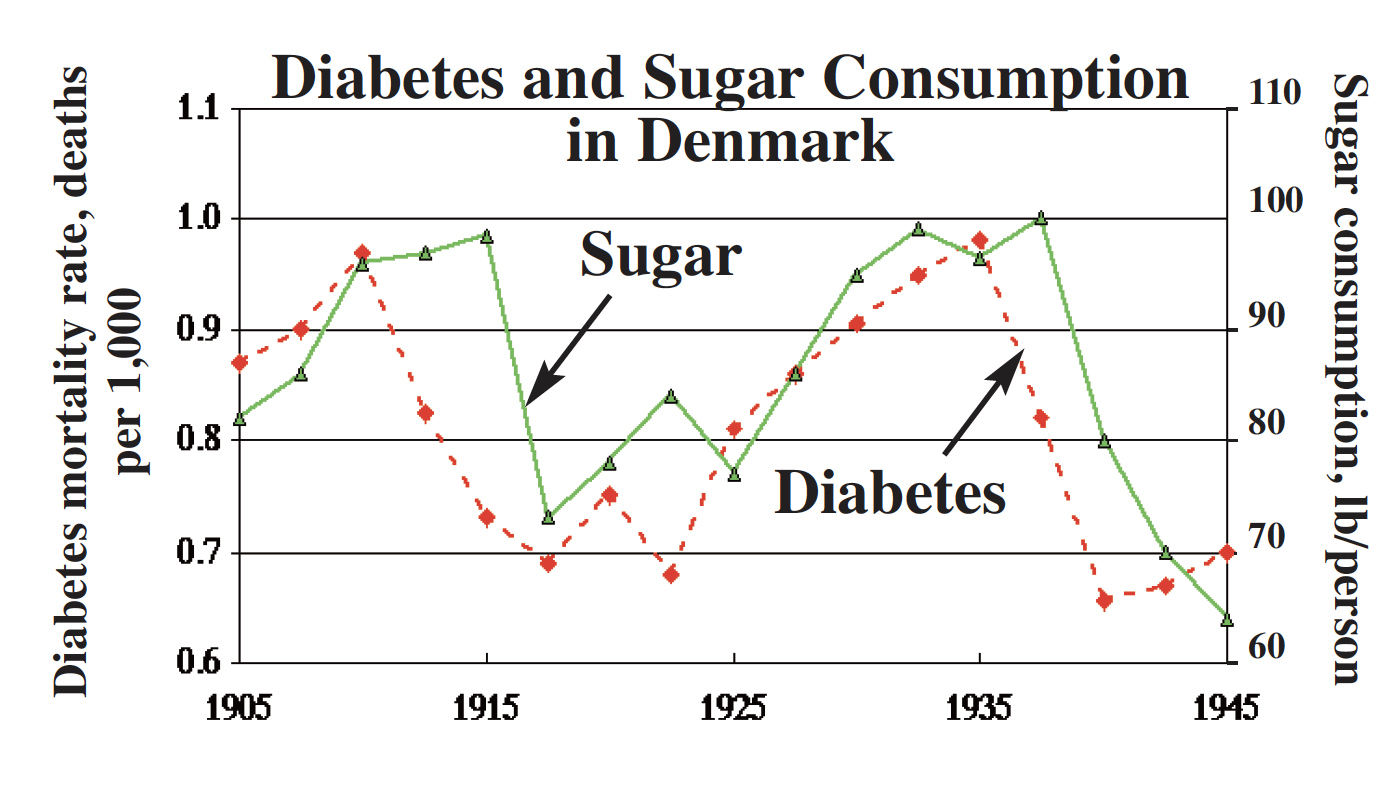
Since many Americans eat so much “foodless food,” it is amazing we remain as healthy as we are … though in reality we are not very healthyas a nation. While the lifespan of Americans is now 73 for men and 79 for women, yet the quality of that life is oftentimes far less than desirable. A large number of older folks — and younger people, for that matter — consume drugs of some sort to treat various syndromes. It is a powerful testimony to the resiliency of the human body how it can keep functioning in spite of all the abuses we humans heap upon it. However, mind and morality suffer inex- orably alongwith the diminishment of food quality, as will be shown later.
The Soil-Food Quality Link
Amidst the dizzying array of factors affecting food quality, seldom do people appreciate the effect that the soil has on that quality. The soil is truly the premier causal agent of food quality … not to deny the genetic effects of various plant varieties. Indeed, plant hybridization has reduced the mineral and vitamin levels of many crops considerably over the past decades, and geneti- cally engineered plants will likely change those levels even more. Plants fabricate soil fertility into their structural and storage organs, which farmers then harvest for food. It is this soil-plant connection that really serves as the foremost link that mankind has to the earth for, as God said to our first ancestor Adam, “… you shall eat the herb of the field … till you return to the ground [soil], for out of it were made; for dust you are, and unto dustshall you return.”6
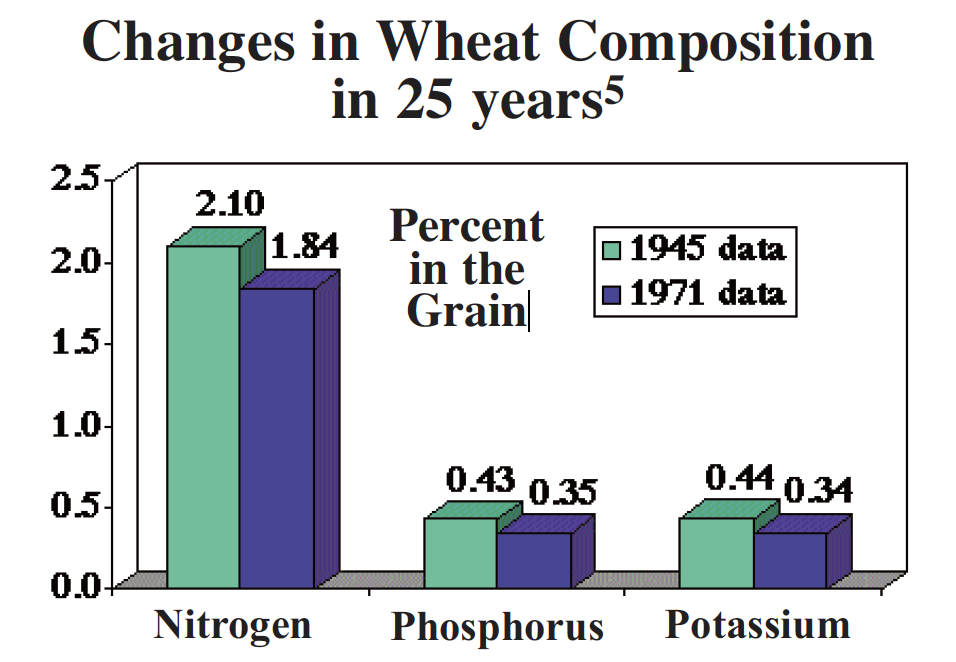
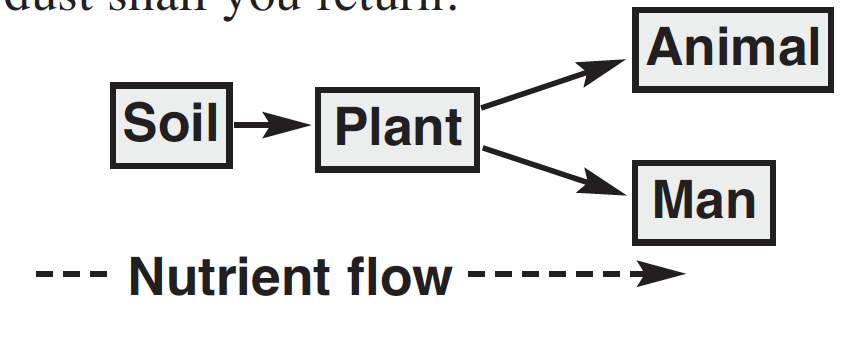
All functions of the body — circulation, respiration, excretion, skeletal support, and others — are directly tied to the nutrients contained in the food one eats. So are the nervous system and mind tied directly to the body. Abundant evidence exists to show this body-mind connection.7 We know that mood swings are intimately tied to blood sugar levels: as blood sugar content falls below about 50 mg/100 ml, headaches, depression, and weakness are likely. The zeal to accomplish and to assist others is greatly dampened.8 High blood sugar levels of diabetes have a similar effect on the mind and body, sapping energy and reducing vitality. To illustrate this point let’s briefly consider two case histories.
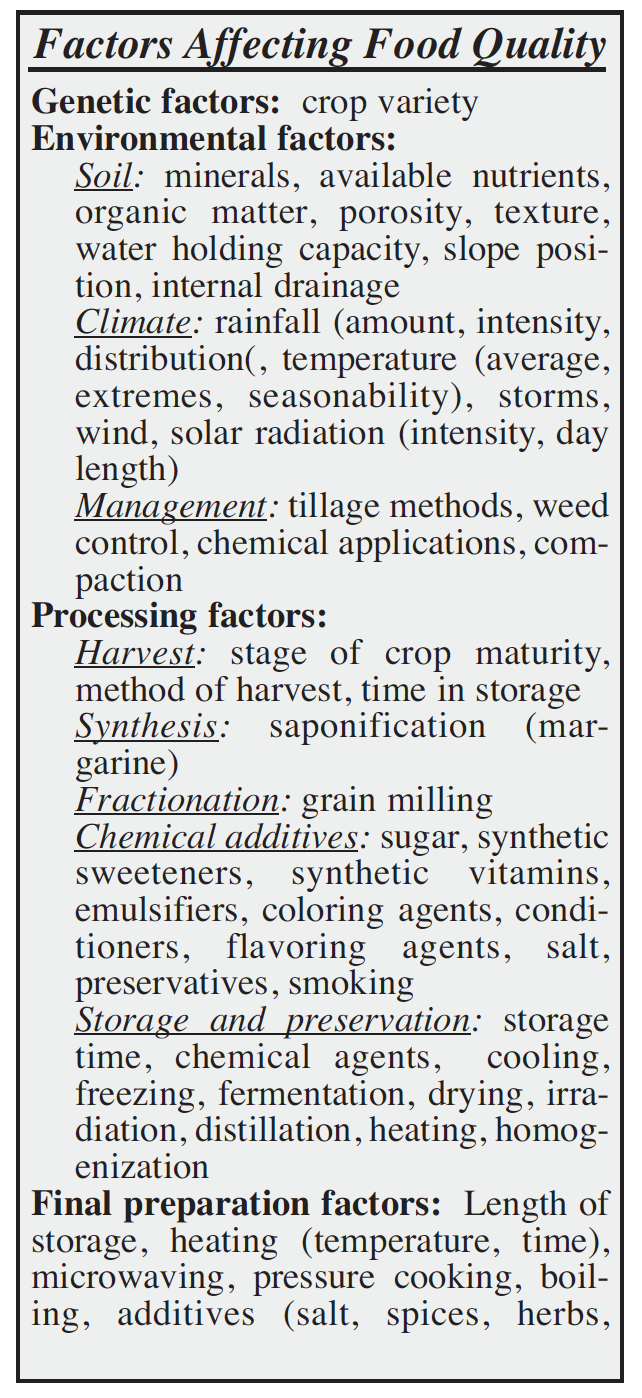
Bob, the College Dropout9
Bob, a bright and aspiring student, had attended graduate school working on his doctorate in mathematics, but his work was interrupted by Army service. After returning home he had no ambition to return to school and complete his degree; he had no goals, seldom went anywhere, and forgot all about math. By chance he met a doctor who understood the importance of nutrition in mental health, who advised the pathetic young fellow to take 100 mg per day of pantothenic acid (Vitamin B12). Bob began taking the supplement, and about ten days later, while window shopping, caught sight of an expensive German camera and decided to pursue photography as a hobby, if not as a career.
Amazed by his own growth in interest in life, he wisely attributed this energy to the Vitamin B12, so out of curiosity tripled the dose. This dose he continued for several months until five months after the first dose, he applied for readmission to his former university. In two years he had a Ph. D. in mathematics.
This marvelous transformation of Bob by taking just a single vitamin is remarkable. His energy output increased radically such that his “real personality” could be expressed. According to Watson in Nutrition and Your Mind,10 “Since all behavior depends on the production of energy is the tissues, one’s ‘personality’— what one thinks, feels, and does — changes when one’s energy output changes.”
Agatha, the Reclusive Housewife11
Agatha was a delicate, shy, and sensitive young married lady who was a friend of a doctor specializing in treating psychological disorders. Agatha was afraid of nearly everything and everyone, refusing to ride on freeways — she would become terrified — and avoided contact with anyone but her husband and family. Agatha, a fast metabolizer, was used to eating quick-energy foods like honey, fruit juice, bread, and potatoes, which gave her quick energy but led to its rapid depletion. After consenting to try a higher protein, whole grain diet, she soon became a highly motivated, confident, successful person with many interests, many friends, and a whole new existence in the outside world from which she had been hiding all her life. She became a secretary for a law firm, and remained an extrovert as long as she adhered to the proper diet … which was usually. According to Watson,12
“In explaining the reason behind her ‘new personality’ , I told [Agatha] I had seen many an alleged ‘introvert’ turned into an ‘extrovert’. An introvert ‘looks in’ only because he’s not creating sufficient energy in his nervous system to ‘look out’ — to be an extrovert.”
Experiments with rats and Vitamin A — amongst many vitamin and mineral studies — have shown that their “personalities” changed by becoming much more “vital” and “active” with more of the vitamin.13 Minimum daily requirements of the government are not a reliable guide for optimum body-mind functioning when studies prove that much more of a nutrient is usually better. Note the figure above that contrasts one’s personality to nutritional level.14
The Soil – Morality Connection
Now the connection between soil fertility and mind becomes clearer. Low or imbalanced levels of nutrients in crops that are raised using hybrids and genetically engineered varieties, with high levels of commercial nitrogen on soils depleted of organic matter and minerals from continuous cultivation, leads to deficient levels of nutrients in the foods grown. These deficiencies in turn lead to depressed functioning of both body and mind, which relates in large degree to the self-centered, medication-dependent nature of so many people today … explaining the apathy and indifference so notable in today’s undernourished but overfed culture.
A study performed by Smith15 com- pared organically produced versus conventionally produced foods purchased in Chicago-area supermarkets. In this study organic pears, apples, potatoes, and wheat had, on the average, over 90% more of the nutritional elements than similar commercial food … and if sweet corn levels are included the average difference was over 250%! See the graph on the next page, and note especially differences in microelements.
These values of fresh foods do not take into account the harsh toll that food processing and long-term storage have on many foods in our supermarkets. Fresh and properly grown foods should comprise our entire diet — whether grown by ourselves or others — for processing can negate much of the good that excellent productive practices deliver.
The link between foods bereft of proper nutrients and our national trend towards illness, immorality, and lawless- ness is serious and real. No effort will be made in this short article to reveal the trends in crime, abortion, divorce, pornography, and other symptoms of breaking moral laws. The message rings loud and clear: food quality has a lot to do not just with the physical health of a people, but their mental and spiritual health as well. We should heed the call to adjust our agricultural practices to pro- duce the highest quality food possible, not only for the sake of disease prevention but also for generating optimum energy and morality amongst our people. Isaiah 7:15 states, “Curds and honey shall He [Christ] eat, that He may know to refuse the evil and choose the good.” That ought to be the motivating statement for all of us in agriculture to produce crops that engender life and health.

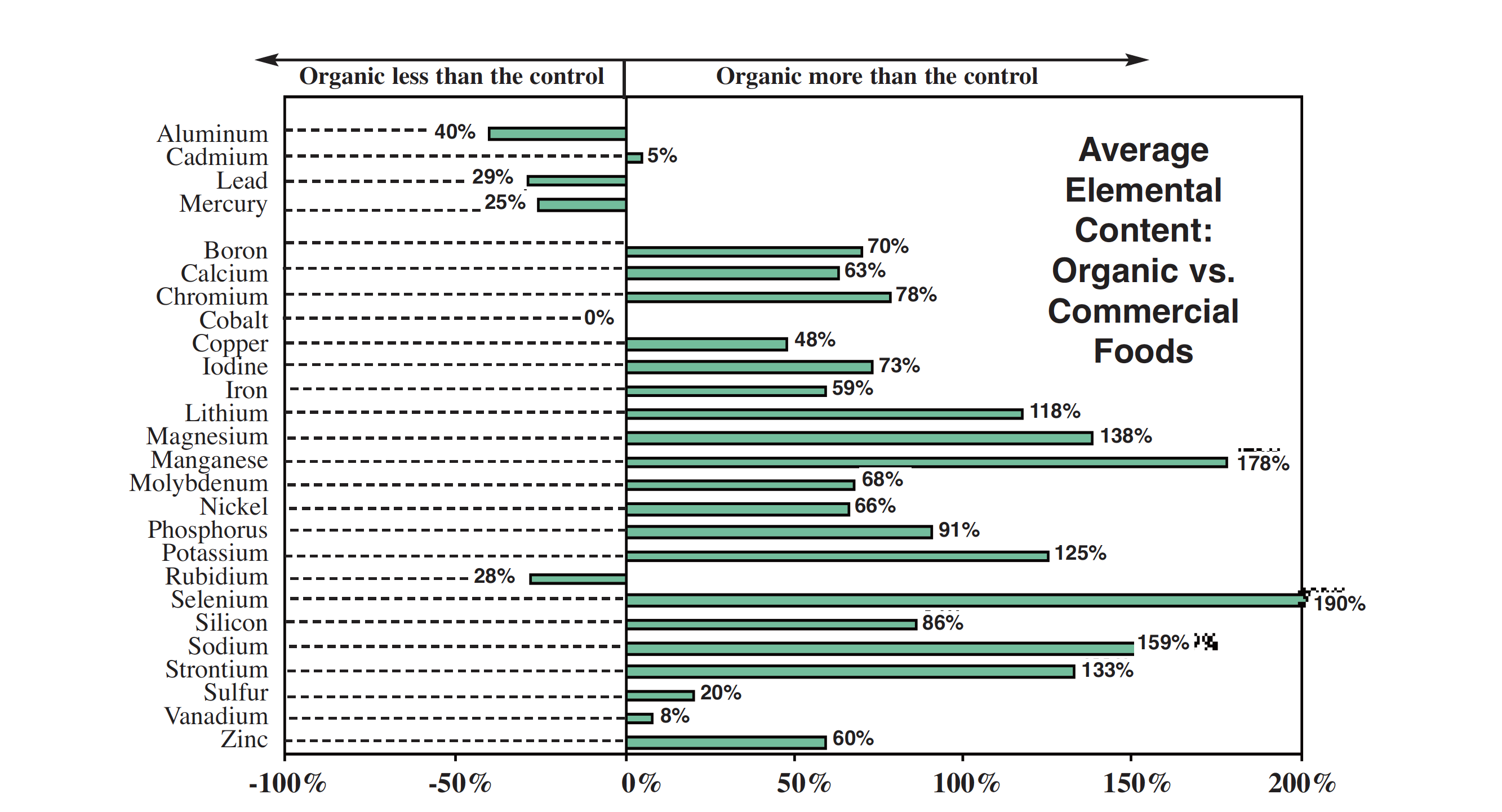
Bibliography
- McMillan, 1963. None of These Diseases. Fleming H. Revell Co., Old Tappan, New Jersy.
- Simone, Cancer and Nutrition. McGraw-Hill Book Company, New York.
3,4. Burkitt, D., and Trowell, H. Refined Carbohydrate Foods and Disease. Academic Press, New York.
- Morrison, F. 1945. Feeds and Feeding. The Morrison Publishing Company, Ithaca, New York; National Academy of Sciences. 1971. Atlas of Nutritional Data in UnitedStates and Canadian Feeds. NAS, Washington, D.C.
- Genesis 3:18-19.
- Cheraskin, , Ringsdorf, Jr., W., Brecher, A. Psychodietetics. Stein and Day, New York.
- Martin, C. 1971. Low Blood Sugar: The Hidden Menace of Hypoglycemia. ARC Books, Inc., New
- Watson, G. 1972. Nutrition and Your Mind, the Psycho chemical Response. Harper and Row, Publications, New
10, 11, 12, 13, 14. See 9.
- Smith, B. 1993. Organic foods vs. supermarket foods : elemental levels. The Journal of Applied Nutrition 45(1).

